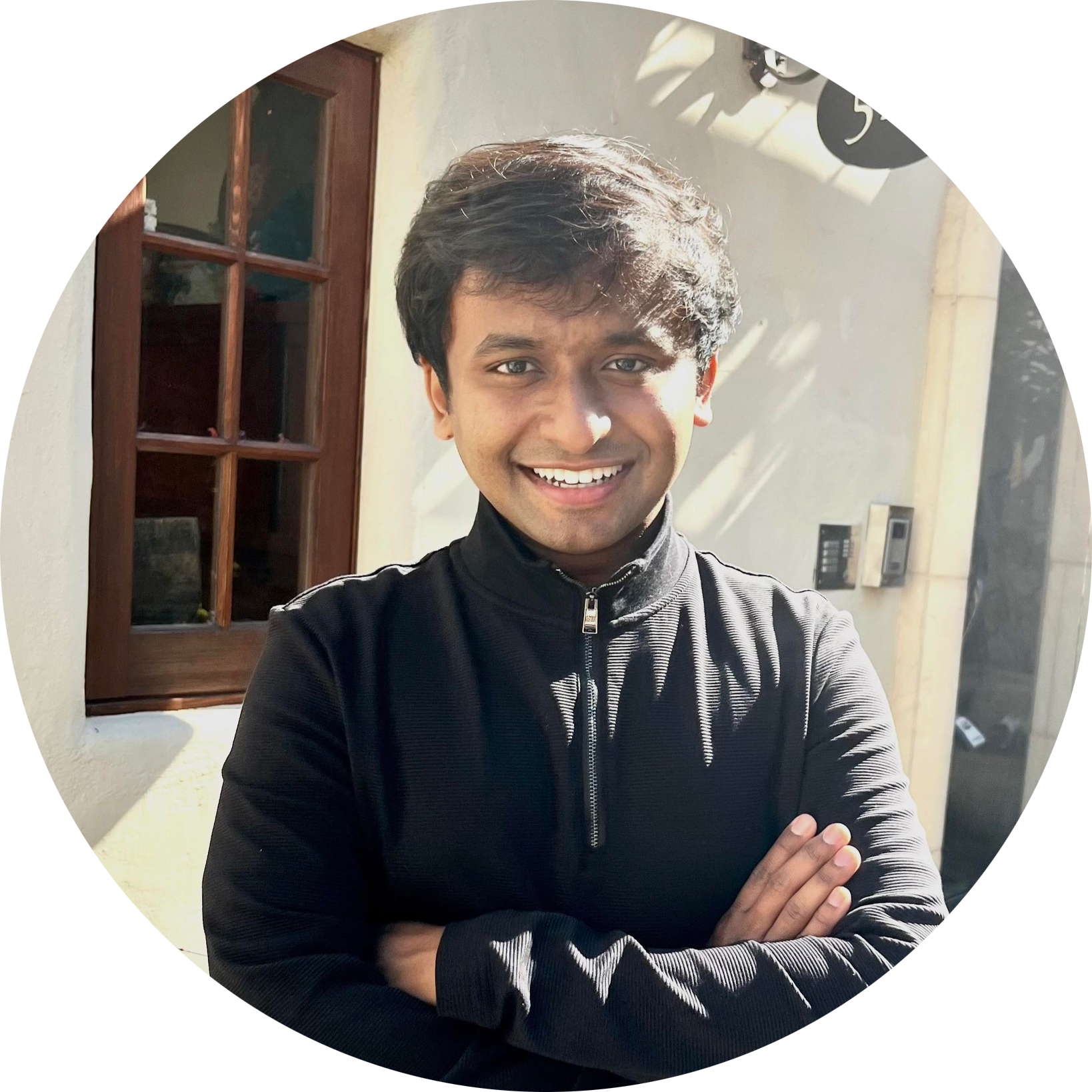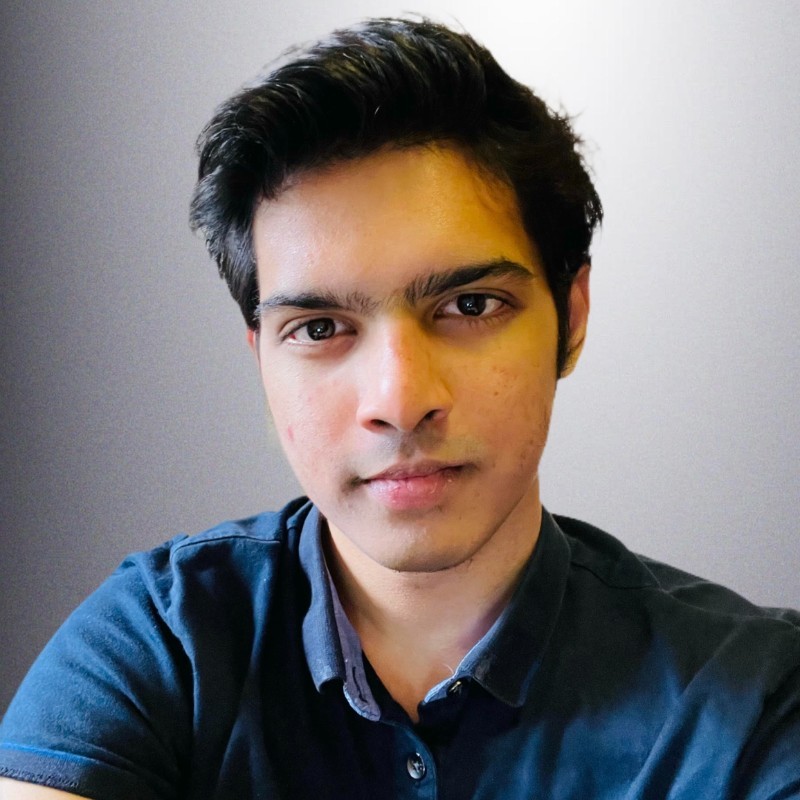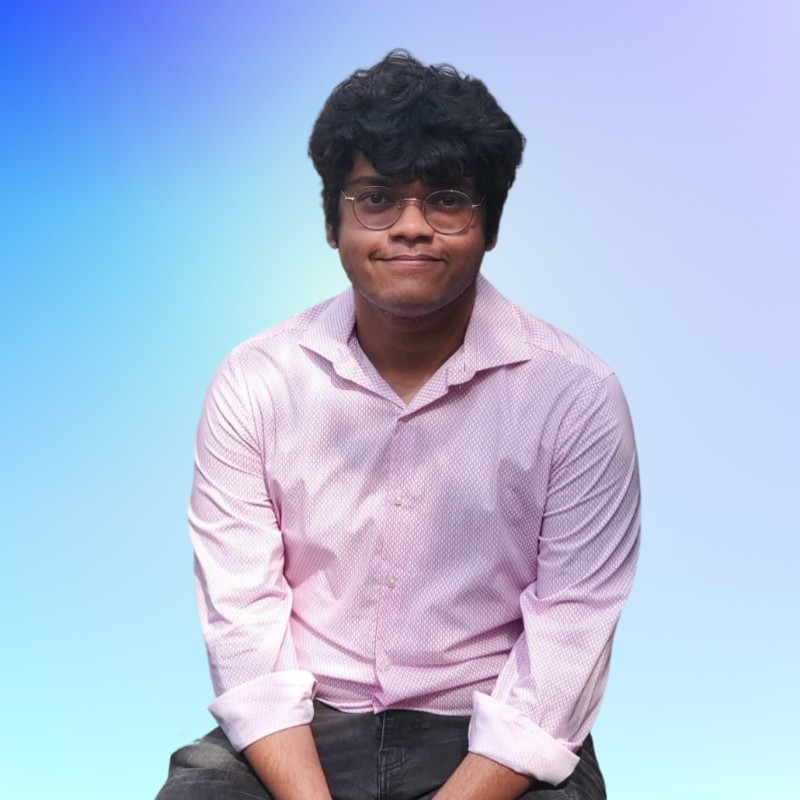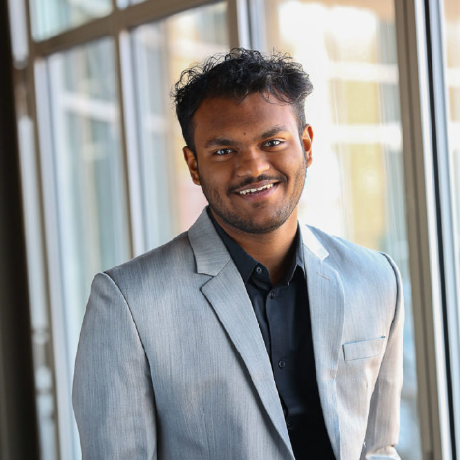POLYNOMIAL
CAMP
Where Ideas Come to Be Explored
OUR VISION
''It is in this gesture of 'going beyond,' to be something in oneself rather than the pawn of a consensus, the refusal to stay within a rigid circle that others have drawn around one - it is in this solitary act that one finds true creativity. All other things follow as a matter of course.''
ALEXANDER GROTHENDIECK
The world of science is vast and deeply mysterious. There is a lot more to mathematics than only solving integrals. There is a lot more to physics than calculating dynamics. Science tells us something deep about the universe we live in. Indeed, mathematics gives us a language and a whole world of abstract objects that describe the natural world around us - from numbers and functions describing very visible phenomena to abstract things groups describing symmetries, coordinate rings describing spaces cut out by polynomials and topology helping us characterize geometric properties. Physics provides us a language to understand nature, both at a microscopic level and the colossal one. Computer science is much more than simply writing code for applications - it provides us tools to understand what problems are solvable at all and how fast we can hope to solve them.
This Summer, we want to take that journey of learning the foundational ideas and language with which we can explore this vastness. The first steps must start from learning the basic pillars. We often come across very simple objects that do not seem out of the ordinary at first sight, but are deeply powerful. The journey to the modern advances needs to start from fully grasping foundational concepts like rigorously understanding sequences, learning to solve problems in kinematics, learning to implement and analyze basic algorithms.
It is important to appreciate how far-reaching these basic concepts are. Take for example, polynomials - equations of the form anxn+ an-1xn-1+ . . . + a1x + a0; we come across them at a fairly young age and we even learn how to solve quadratic polynomials before high school! Yet, we do not realize how whole fields of very advanced and modern science revolve around them. In computer science, people working on complexity theory, even the P=NP problem, can be found investigating what problems can be solved in polynomial time. Very powerful results in mathematics, like Hilbert’s Nullstellensatz, can be proven using simple properties of polynomials. In some sense, the whole field of algebraic geometry is about solutions of polynomial equations and the interesting geometry they entail. Therefore, learning these basics well is of utmost importance."
This summer, at Polynomial Camp, we plan on taking on that adventure. We will explore mathematics, physics and computer science beyond the traditional school curricula; we will take a more rigorous approach to studying several building blocks of these fields that would provide us a language and other tools to explore the bigger questions. We will learn what motivated the study of these things over the past many centuries and get a sense of why they are still of great interest.
''You take the blue pill, the story ends. You wake up in your bed and believe whatever you want to believe. You take the red pill, you stay in Wonderland. And I show you how deep the rabbit hole goes''
MORPHEUS
MEET THE TEAM

Jubayer Ibn Hamid
Mathematics Camp
Jubayer is currently doing research on machine learning in IRIS Lab, Stanford Artificial Intelligence Laboratory (SAIL). He studied mathematics/physics at Stanford University as an undergrad and computer science/mathematics for masters. His research interests are in offline reinforcement learning and representation learning. He has worked on problems like disentangled representation learning, reinforcement learning theory and behavior sampling algorithms. In mathematics, he is interested in abstract algebra and algebraic topology/geometry.

Tausif Hossain
Physics Camp
Tausif is currently pursuing PhD in Boston University and working at Fermi National Accelerator Laboratory on the Mu2e Experiment. Before this, he completed his BSc in Physics from Yale University. During his research at Mu2e he has made various meaningful contributions to the collaboration by focusing on the intersection of physics and data analysis. He is currently interested in using simulations and machine learning algorithms to improve various physics analyses in novel ways. He also has extensive experience in teaching and tutoring students and is passionate about improving science communication to a wider audience.

Farhan Tajwar Romit
Computer Science Camp
Farhan is currently working as a software developer at UT Health San Antonio. He is pursuing his bachelor's in Computer Science at the University of Texas at San Antonio. His primary interests in computer science include computer architecture and operating systems development. His previous projects include making an operating system from scratch, designing an interpreter for a proprietary programming language, and working on IoT-device classification using LLMs with a UTSA faculty member. He is passionate about making STEM education more accessible to a wider audience.

Ramisha Sharika
Mathematics Camp
Ramisha is a third-year student at Cornell University majoring in Computer Science and pursuing minors in Mathematics and Philosophy. She is currently carrying out research in the field of machine learning with a faculty member at Cornell. Her interests lie in the nexus between computational theory and mathematics, specifically in the applications of analysis in machine learning and of algebra in cryptography.

Hasif Ahmed
Physics Camp
Hasif is on his way to graduate with a double major in Physics and Mathematics (BA) from Lawrence University. He is starting his PhD in Mathematics at University of Wisconsin Milwaukee this fall. Hasif is interested in Mathematical Biology, PDEs, Probability theory. He has previously worked on DNA transcription in bacteria, analyzing Facilitated Diffusion. During his undergrad, he worked at Lawrence Berkeley National Laboratory on a machine learning project and helped develop an efficient stochastic solver for a diffusion model to simulate high energy physics experiments.
MATHEMATICS CAMP 1 - REAL ANALYSIS AND LINEAR ALGEBRA
Instructor: Jubayer Ibn Hamid
''The beauty of mathematics only shows itself to more patient followers''
MARYAM MIRZAKHAMI
Real analysis and linear algebra are not just fascinating in and of themselves; they are extremely useful. More modern sciences, like machine learning and optimization, employ these fields of mathematics almost every step of their way.
In real analysis, we will first take a close look at what defines integers, rationals and real numbers - their various axioms and consequences. After that, we will study sequences of real numbers - their limits, properties of subsequences and special kinds of sequences like monotone, bounded, etc. Then, we will naturally move on to series and functions - their limits, continuity, etc. We will close by taking a brief look at metric spaces - open, closed sets and continuous functions on metric spaces. After doing so, we will gain a much better understanding of reals in general. In linear algebra, we will take a brief look at fields and then focus on vector spaces defined on them - in particular, finite-dimensional ones. We will then study linear maps which will motivate the study of matrices, null spaces, etc. followed by the study of dual spaces. We will close by taking a look at eigenspaces and inner product spaces.
These techniques will become very useful in any field of science you go to. In optimization, one would frequently face problems like optimizing resources under certain constraints or scheduling usage of batteries to conserve electricity or optimizing a portfolio at an investment bank; you would often find yourself formulating these problems through things like “linear programming”, “second order cone programming”, etc which, more often than not, are in the language of linear algebra. In machine learning, you would often find yourself trying to analyze local properties of a loss surface using real analysis. The most rigorous study of probability and statistics is founded on real analysis.
Prerequisites: we hope that you know the mathematics that is taught up until 10th grade. We will also learn everything through proving them. Do not worry if you do not know proof-writing yet - we will teach an introduction to proof-writing as well. While the course content may seem daunting, we promise we will go at a pace that you can understand and, more importantly, enjoy.
MATHEMATICS CAMP 2 - ABSTRACT ALGEBRA AND DISCRETE MATH
Instructors: Jubayer Ibn Hamid, Ramisha Sharika
''Algebra is the offer made by the devil to the mathematician. The devil says: I will give you this powerful machine, it will answer any question you like. All you need to do is give me your soul: give up geometry and you will have this marvelous machine''
M. ATIYAH
Algebra is one of the most beautiful fields of mathematics. This is where you will see the power of abstraction. Groups and rings are very simple, abstract umbrellas under which many things we see around the world fall - from numbers to matrices to polynomials to the symmetries of the universe (take a look at Noether’s Theorem for example). It is truly startling how much information these abstract objects contain - rings and ideals have been used to describe complex relations and geometries and to get very powerful results. For a basic example, take a look at Hilber’s Nullstellensatz or how physicists constantly discuss symmetries whose natural language is group theory.
We will introduce groups and rings - how to construct them, various contexts in which they show up, their defining characteristics, their subgroups/subrings and generators. We will then study homomorphism, the very useful isomorphism theorems and actions on groups. Watch this video to get a sense of what this field is all about!
It is hard to overstate the impact of algebra on the modern world. Today it is no longer a separate field of mathematics; algebraic number theory, algebraic geometry, etc. are all very hot topics of mathematics today.
''Without mathematics, there’s nothing you can do. Everything around you is mathematics.''
SHAKUNTALA DEVI
Mathematics forms the foundations of many diverse fields, a key one being Computer Science. A course in discrete structures bridges the gap between pure mathematics and theoretical computer science. It allows us to apply tools such as logic, probability, and proofwriting to formalize our understanding of algorithms and better grasp the theoretical underpinnings of advanced topics in computer science, such as cryptography and machine learning. In this course, we will start by doing a review of different proof techniques with a strong emphasis on how to write inductive proofs. We will then continue to practice formal proofwriting while learning about set theory, graph theory, and number theory. The focus of this course will be on learning the basics of graph theory and number theory.
PHYSICS CAMP 1 - ADVANCED CLASSICAL MECHANICS: FROM LAGRANGIANS AND HAMILTONIANS, CHAOS THEORY TO COMPUTATIONAL PHYSICS AND AN INTRODUCTION TO PARTICLE PHYSICS
Instructor: Tausif Hossain
''It is the harmony of the diverse parts, their symmetry, their happy balance; in a word it is all that introduces order, all that gives unity, that permits us to see clearly and to comprehend at once both the ensemble and the details.''
HENRI POINCARE
We were always taught in school that energy is conserved in a closed system. But have you wondered why energy is conserved? This simple question we will learn, has a surprisingly beautiful answer: energy is conserved when there is time reversal symmetry. That is, if physics remains the same forwards and backwards in time, we can say energy is conserved! There’s numerous such symmetries in our universe, such as translation symmetry leading to momentum conservation etc. These symmetries are the bedrock of modern physics and all of this starts in our well known classical mechanics!
Using symmetry as our basis, in this course we will delve deep into classical physics and actually derive Newton’s Laws instead of taking them as a given. We will solve famous problems like the Brachistochrone problem, find simpler and beautiful methods to solve difficult mechanics problems, and in general look at the usefulness of Lagrangians and Hamiltonians in a wide variety of fields. We will also show how simple symmetries can form the basis of all of Particle Physics, and we will do a quick introduction to many fascinating results and ideas in this field.
We will also focus some time on learning computational physics skills like how we can actually simulate complicated physical systems. We will use Python to learn together how we can not only study but also animate a double pendulum or other chaotic systems such as a 3-Body Problem! Thus, by the end of the course you will be able to make many novel connections on how interconnected physics is. You will hopefully also have the computational tools to be able to do your own simulations and research projects, which I think will be a great foundation to have for a future in any science or data analysis field.
Prerequisites: We hope you’ve learnt calculus at an introductory level, as taught till grade 10. We will work through physics from first principles so no advanced knowledge is necessary. We will also start the computational physics code from the basics so no prior coding knowledge is needed!
COMPUTER SCIENCE CAMP 1 - PYTHON, BASIC DATA STRUCTURES AND ALGORITHMS
Instructor: Farhan Tajwar Romit
''Let us change our traditional attitude to the construction of programs. Instead of imagining that our main task is to instruct a computer what to do, let us concentrate rather on explaining to human beings what we want a computer to do.''
DONALD KNUTH
Computers seem like the closest thing we have to magic. But if we peek behind the curtain just a little bit, we can see for ourselves the glorious mess that a computer really is. Everything, starting from the contents of our hard drives, to the pixels on our screen, are composed of just some 1s lost in a big sea of 0s. Surely, you'll think, this does not make sense to even the computers themselves.
And you would be right. In reality, the CPU inside our phone, laptop, or PC is actually a very simple machine that just does exactly what it is told. As we will see, human ingenuity is actually the glue that holds a computer and its seemingly arbitrary actions together. With our decades of experience in theorizing about, and working with, computers, we have been able to formulate certain techniques of storing data on our computers (data structures), and certain techniques of using and manipulating that data (algorithms), which form the bedrock of all the awesome things our computers can do. In this course, we will study the fundamentals of these techniques.
We will begin by taking a look at the motivations behind some common data structures like arrays and linked lists, and then study some commonly-used algorithms for those data structures (such as insertion and sorting algorithms). Later on, we will encounter some more specialized data structures, such as trees (for storing hierarchical data), graphs (for networked data), and heaps (for ordered data).
The language for this course will be Python. Don't worry - as we go along, we will cover all the necessary Python skills you will need for completing this course!
WHAT WILL BE INCLUDED?

Lectures
Weekly lectures where we will cover a broad variety of topics from your selected courses.

Problem Solving Camps
We strongly believe that to truly understand the material in depth, you need to solve problems. They help you truly grasp some of the abstract ideas, see how to work with them and see some wonderful applications. At Polynomial Camp, there will be collaborative problem-solving sessions where you will be solving problems in groups where you will learn from one another and hopefully you will see how different people appreciate the concepts.

Problem Solving Sessions/Office Hours
In these sessions, we will discuss how to solve problems and answer your questions if you are stuck. These office hours will be led by students of Stanford University, Cornell University, University of Texas, University of Waterloo and so on.

Final Project
Towards the end of the camp, you will work on a fun final project where you will explore something that you have found interesting from the material we have explored in a group.

Guest Talks
We will be inviting various experts from each field to guest lectures on the current state of the field and their research. These will likely be a combination of people from both academia and industry.
SCHEDULE
| Course | Time |
|---|---|
| Physics Camp | Saturday/Sunday - 10:00 pm - 11:30 pm |
| CS Camp | Monday/Wednesday - 8:00pm - 9:30pm |
| Maths Camp 1 | Monday/Thursday - 9:30 pm - 11:00 pm |
| Maths Camp 2 | Tuesday/Friday - 10:30 pm - 12:00 am |
OUR FEES
We are offering a few bundles:
| Bundle | Price |
|---|---|
| Bundle 1: For any 1 course | Tk 3000 per month |
| Bundle 2: For any 2 courses | Tk 5000 per month |
| Bundle 3: For any 3 courses | Tk 6000 per month |
| Bundle 4: For all 4 courses | Tk 7000 per month |
FREQUENTLY ASKED QUESTIONS
What are the dates for Polynomial Camp?
The program will be from 24th June to 16th September
Who is Polynomial Camp for?
Polynomial Camp is targeted towards anyone who is curious to learn more. We expect this to be mostly helpful for students in high school and undergraduates.
We welcome people from all backgrounds but also want to specifically target resources to those who are from a disadvantaged background. If you have questions regarding this or if you believe you need specific guidance for the camp to be helpful to you, please feel free to email us at jubayer@stanford.edu or tausifh@bu.edu.
Are there any prerequisites for joining Polynomial Camp?
There are some fairly basic prerequisites that you should know to be able to fully learn what we will teach (these are written in detail in the next section). However, we welcome everyone as long as you love an adventure!
What will the weekly schedule be?
Tentatively, we will have two lectures each week and 2-3 office hours where people can ask us questions and we can help with problem solving.
How will the classes be conducted?
Classes will be held through Zoom lectures. We will have groups (on Slack/Discord/Edstem) where people can ask questions and discuss material (or memes).
Can I get financial aid?
Yes! If you are interested in enrolling in Polynomial Camp but you require financial aid, please feel free to reach out to us. To do so, send us an email at either jubayer@stanford.edu or tausifh@bu.edu. In the email, please tell us why you require financial aid and provide any supporting documentation you can provide to strengthen the financial aid application. We are providing aid on a case-by-case basis and we are trying our best to broaden access to as large a group as possible.
Website by Farhan Tajwar Romit
